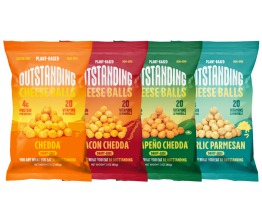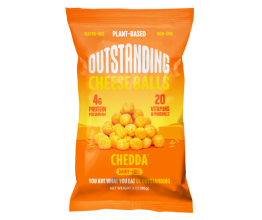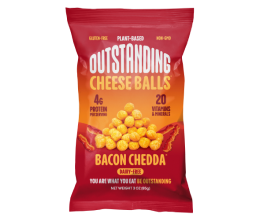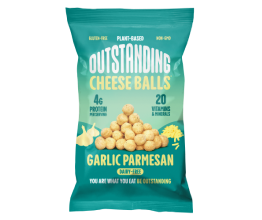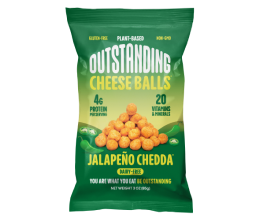How Hot Is a Habanero Pepper?
It’s getting hot in here! When it comes to hot foods, there are a few different types of people. Are you a person who seeks out the hottest, most mouth-melting peppers on the planet just to push yourself beyond human limits (read: a crazy person)? Are you the one who dabbles with spice here and there, but runs for cover when the heat cranks up too high?
Maybe you’re the person who needs a fire extinguisher as soon as you scoop from the mildest salsa at the party – just a hint of heat, and you’re done! But we think you can do a little better than that, especially since you’re here, looking up habanero peppers.
Regardless of where you stand on super-spicy foods, it’s definitely an interesting subject to explore, especially if you like to try different cuisines and unique ingredients.
Today, we’re taking a look at the habanero pepper, one of the most celebrated spicy peppers on the planet. We’ll discuss the origin and cultivation of the habanero, how it’s used in dishes across the world, and of course, how hot this pepper is on the always-scary Scoville Scale.
By the end of this article, you’ll know all the key facts about habaneros, whether you want to test your tastebuds or steer clear of these peppers altogether!
Habanero Basics
Before we talk about the pure heat of the habanero pepper, let’s get some fundamentals out of the way. Here’s what the pepper looks like, where it comes from, and some varietals to recognize.
Appearance
To the pepper connoisseur, the habanero is instantly recognizable. Rather than the elongated shape of the jalapeno or hatch chile, the habanero is rather squat and teardrop-shaped (possibly referencing the fact that you’ll literally be crying after you eat it). It’s also a small pepper – about the size of a strawberry – but don’t make the mistake of switching them up!
The habanero has a bright, reddish-orange color and a forest-green stem, and depending on how ripe they are, the color might darken a bit over time.
Split the habanero open, and you’ll find a lot of empty space inside, with small clusters of seeds clinging to the interior segment of the stem. Like so many dangerous things in nature, you wouldn’t know how hot the habanero would be just by looking at it.
Cultivation of the Habanero
You’d think that Havana, Cuba – the city that gave the pepper its name – would be where the habanero came from, but that’s not the case.
Habaneros originated in the Amazon but really thrive in the hotter regions of Central America and Mexico, where the sun shines brighter, and the soil is generally less moist.
The Yucatan Peninsula in Mexico is the world’s foremost producer of habanero peppers due to these ideal conditions for growing extra spicy peppers. Yes, they make them spicier. On purpose.
There are also several different cultivars of the habanero that vary slightly in shape, size, and color.
Habaneros can be found in full red or orange colors, with longer or shorter shapes, although yellow, purple, green, brown, and white versions have been grown successfully, too. Make sure to read those labels at the store and know exactly what you’re getting since it will have a serious impact on your recipe!
Habanero in Food
These peppers look cool and come in a few flashy colors, but the reason they’re grown is to infuse their fiery flavors into food. Here are some culinary uses for the habanero so you can track down some spicy snacks or try some recipes at home.
Hot Sauce
Some of the most popular hot sauces have a surprisingly simple list of ingredients, and the habanero often makes the list along with vinegar, salt, and maybe some other chiles.
Believe it or not, the jalapeno doesn’t provide quite enough kick to make a hot sauce satisfyingly spicy, whereas the habanero really delivers the goods. We know, we were shocked too.
When balanced out with some sweetness from mango or pineapple, you’ve got a killer homemade hot sauce that goes on just about anything.
Of course, you can leave the sugar out altogether and enjoy the straight-up fire of a classic habanero hot sauce. Just know what you’re getting into before you bombard your entire meal in one of these super spicy sauces. Fair warning: it will involve tears and a runny nose. But that’s all part of the fun!
Salsas and Jams
Grab your tortilla chips, because we’re about to go dipping! Habanero is an amazing addition to fresh salsa, and as you might expect, a little bit goes a very long way.
With tomato, bell peppers, fresh herbs, and a pinch of salt, you’ve got an easy salsa recipe that beats the store-bought stuff every time.
If you’ve got plenty of extra habaneros lying around the kitchen, you can also grind them down for use in a spicy pepper jam, which makes for a great topping on a sandwich, piece of toast, or even slathered onto your morning omelet. That’ll wake you up faster than a slap in the face!
Spicy Seasonings
Sometimes you want to infuse that high-heat flavor right into your proteins and veggies or dust it onto some popcorn or French fries.
Standard salt and pepper give you a reasonable boost of flavor, but it’s often not enough. Seasonings with powdered habanero peppers are just spicy enough to bring the heat without ruining your dining experience by destroying your taste buds.
If you’re in need of a new spicy seasoning for your pantry, look no further than the Hella Hot Pigless Bacon Seasoning from Outstanding Foods.
This seasoning lives up to its name for sure, including paprika extract, smokey natural flavors, habanero peppers, and even the elusive ghost pepper chile to really ramp things up. If you’re not running for a glass of milk after eating this, we didn’t do our job.
Plus, our Hella Hot seasoning delivers a tasty hit of bacon flavor without a single animal product in the entire batch. You’ve got to try it to believe it.
Just How Hot is the Habanero?
Okay, so you know the habanero is hot. But just how hot is this ingredient, and how does it stack up to other peppers in terms of spice and other flavors on a scale from not-too-bad to flames coming out of your ears?
Here’s the moment you’ve all been waiting for – the habanero heat factor and how it compares.
The Scoville Scale
Back in the early 1900s, an American pharmacist named Wilbur Scoville created the Scoville heat index, recorded in Scoville Heat Units, to determine the spiciness of chili peppers.
More specifically, the system looks at the concentration of a compound called capsaicin in peppers, which is the main source of heat as we experience it on the palate.
Scoville used a method of dissolving peppers in alcohol to extract the number of capsaicinoids and determine how they would impact the senses. While everyone reacts slightly differently to spiciness due to varying heat receptors and tastebuds, the Scoville method gives us an objective idea of how foods rank in terms of spice.
Without diving into a chemistry lesson, just know that the more capsaicinoids are found in a pepper, the higher it will rank on the Scoville scale.
With that said, the habanero is loaded with capsaicinoids, scoring very highly on this test at 150,000 Scoville Heat Units, and ranking among some of the spicier peppers on the planet.
Considering that peppers in the 50,000-point range are considered highly pungent by Scoville’s standards, you can guess just how hot a habanero will be if you take a direct bite!
Comparison to Other Peppers
The Scoville Scale is really only helpful to compare different peppers and relate them to your own experience. As a point of reference, here are the Scoville Heat Units for a few of the more popular peppers you may know:
- Bell Pepper: 0 SHU
- Sweet Paprika: 100-500 SHU
- Red Tabasco Sauce: 3750 SHU
- Jalapeno: 5000
- Hungarian Wax: 15,000
- Cayenne: 50,000
- Bird’s Eye Chili: 100,000
Knowing this, you can see that the habanero is truly in a different league of heat, with high concentrations of capsaicinoids compared to the more mild peppers out there.
If you’re someone who can’t handle the heat of a jalapeno, for example, just know that that the habanero is more than 25 times as hot, so tread carefully when cooking with this ingredient!
The Best Way to Enjoy Habanero
Maybe it’s not the brightest idea to start cooking with habaneros if you don’t have much of a spice tolerance, which is why we suggest easing into the flavor with some tasty snacks.
Our PigOut Pigless Pork Rinds, for example, come in our classic Hella Hot flavor, giving you a satisfying level of spice without totally overwhelming your tastebuds.
Besides, this is a nutritious, crunchy snack that you’ll be happy to keep around the house when you or another spice-lover needs a quick bite.
If you’re more of a cheese puff fan, our Outstanding Puffs are a phenomenal healthy alternative to the standard grocery store puffs you know and love. Hella Hot is on the menu, but so are many other delicious flavors that won’t register on the Scoville Scale.
Conclusion
We love the habanero pepper for its many uses and distinctive flavors, and we encourage you to give it a try! Just keep that ice-cold glass of water close by, because you’re going to need it.
Sources:
Habanero Pepper Guide | PepperScale
